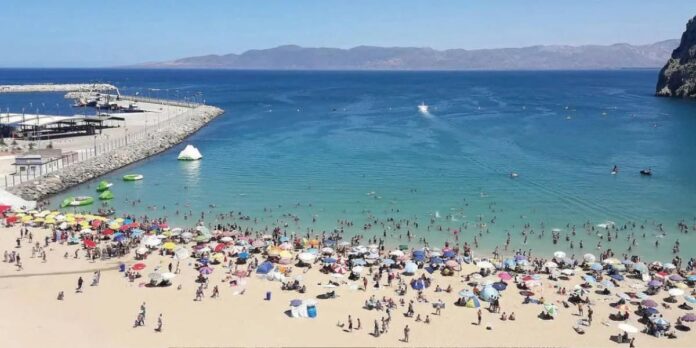Every summer, Morocco’s beaches welcome throngs of families seeking sun, relaxation, and a break from daily life. But beneath the surface of this idyllic coastal scene lies a constant, often invisible threat. The sea, unpredictable and unforgiving, remains one of nature’s most dangerous environments. Drownings claim lives each year—especially among the young—and it’s the country’s Civil Protection services that find themselves on the front lines, fighting to prevent these tragedies.
Their mission begins in early May and runs through the end of September. Throughout these months, trained emergency crews are stationed along the coastline, joined by a seasonal influx of lifeguards brought in each summer to bolster the effort. These additional lifeguards make it possible to monitor more of the most crowded beaches, but their presence alone isn’t enough to eliminate the danger. The sea can turn treacherous without warning—hidden currents, shifting tides, and uneven seabeds can turn a harmless swim into a life-threatening situation in seconds.
Data consistently show that people between the ages of 14 and 25 are at the highest risk. Their confidence in the water, combined with a lack of understanding about marine hazards, makes them particularly vulnerable. Many drownings occur in areas without supervision, where emergency response times can stretch beyond ten minutes—a delay that drastically reduces survival chances. Even at lifeguard-patrolled beaches, danger can escalate in an instant. It takes less than a minute for someone to drown—often just a few feet from loved ones who don’t realize what’s happening until it’s too late.
Civil Protection officials point to certain behaviors that significantly increase the risk. Swimming alone, plunging into cold water after prolonged sun exposure, and ignoring posted warnings all contribute to the rise in accidents. One particularly lethal danger is cold-water shock—when the body is suddenly immersed in cold water, triggering a potentially fatal reaction. This condition, known for its speed and severity, continues to be one of the most common causes of serious water incidents.
Rescue teams are trained to act swiftly because the window to save a drowning victim is heartbreakingly short—just three to five minutes. Every emergency becomes a race against time. That’s why prevention remains the most powerful tool. The colored flags flying above Moroccan beaches are more than just signals—they’re life-saving instructions. Red means danger, black signals a full ban, and yellow is a warning to proceed with caution. Ignoring them can have fatal consequences.
Finally, Civil Protection teams stress the importance of close supervision, especially for children. Inflatable armbands and flotation devices are not substitutes for the watchful eye of an adult. Many accidents happen in shallow water, just a few steps from the shore, in places that seem perfectly safe. Delaying a swim, following safety signs, or simply staying alert can be the difference between a carefree summer day and a preventable tragedy.





